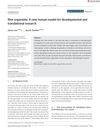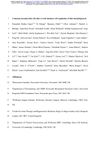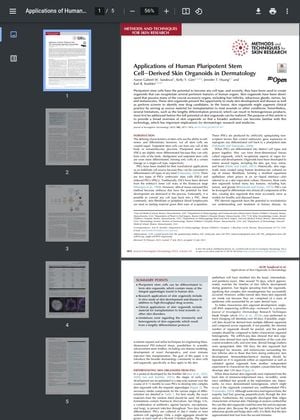TLDR Skin organoids from stem cells can help study and treat skin issues but face some challenges.
Human pluripotent stem cell-derived skin organoids, which include hair follicles, sebaceous glands, nerves, fat, and melanocytes, offer significant potential for dermatological research and clinical applications. They can be used to study skin development and disease, perform high-throughput drug screens, and potentially serve as transplantation material for treating wounds or other skin conditions, including alopecia and vitiligo. However, challenges such as the lengthy differentiation process, resulting heterogeneity, immature state of organoids, limited culture longevity, and variability in hair follicle formation must be addressed. The development of universal-donor iPSC lines and optimization of differentiation protocols are crucial for clinical translation. Despite these hurdles, skin organoids could become valuable tools for advancing dermatologic research and medicine.
14 citations
,
May 2022 in “Stem cell reports” The study created hair-bearing skin models that lack a key protein for skin layer attachment, limiting their use for certain skin disease research.
39 citations
,
March 2022 in “Nature Protocols” Scientists created hair-growing skin models from stem cells, which could help treat hair loss and skin diseases.
 31 citations
,
January 2021 in “Experimental Dermatology”
31 citations
,
January 2021 in “Experimental Dermatology” Skin organoids are a promising new model for studying human skin development and testing treatments.
 November 2024 in “Burns & Trauma”
November 2024 in “Burns & Trauma” Skin organoids help improve wound healing and tissue repair.
 3 citations
,
March 2023 in “Scientific Reports”
3 citations
,
March 2023 in “Scientific Reports” Researchers developed a new method to test hair growth drugs and found that adult cells are best for hair growth, but the method needs improvement as it didn't create mature hair follicles.
 August 2023 in “Military Medical Research”
August 2023 in “Military Medical Research” Scientists have improved 3D models of human skin for research and medical uses, but still face challenges in perfectly replicating real skin.
20 citations
,
November 2021 in “Frontiers in cell and developmental biology” Skin organoids from stem cells could better mimic real skin but face challenges.
 October 2023 in “bioRxiv (Cold Spring Harbor Laboratory)”
October 2023 in “bioRxiv (Cold Spring Harbor Laboratory)” Immune cells are essential for early hair and skin development and healing.
Current hair regeneration methods show promise but face challenges in maintaining cell effectiveness and creating the right environment for hair growth.





